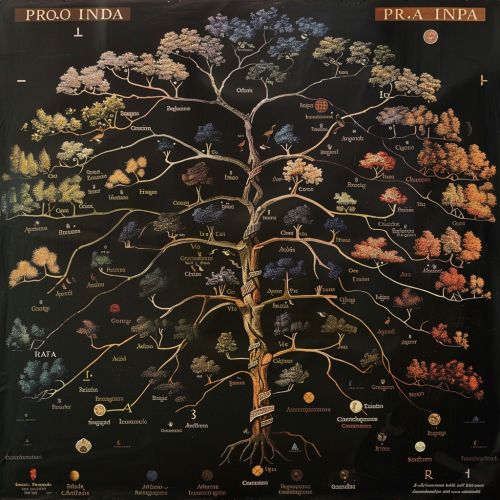Proto-Indo-European language
Introduction
The Proto-Indo-European language (PIE) is the linguistic reconstruction of the ancient common ancestor of the Indo-European languages, the most widely spoken language family in the world. First proposed in the 18th century, PIE has been reconstructed using the comparative method, which compares languages from the Indo-European family and reconstructs their common ancestor based on similarities.


Historical Overview
The existence of PIE was first proposed by Sir William Jones, a British philologist and judge in India, who in 1786 observed similarities between Sanskrit, Ancient Greek, and Latin. This observation led to the development of the Indo-European hypothesis, which suggests that these languages originated from a common ancestral language. This ancestral language, now known as Proto-Indo-European, is believed to have been spoken by the Proto-Indo-Europeans, a prehistoric ethnolinguistic group in the Neolithic Age.
Linguistic Features
PIE is characterized by a complex system of inflections, and a rich morphology. It had eight cases (nominative, accusative, genitive, dative, instrumental, ablative, locative, and vocative), three numbers (singular, dual, and plural), and three genders (masculine, feminine, and neuter). Verbs were conjugated for mood, voice, tense, aspect, and person.
Phonology
The phonology of PIE is a matter of some debate among linguists, but it is generally agreed that it had a series of stops at three places of articulation (labial, coronal, and dorsal), and a series of voiced and voiceless fricatives. It also had a pitch accent system, which is preserved in Ancient Greek and Vedic Sanskrit.
Morphology
The morphology of PIE is highly inflected, like that of Latin and Ancient Greek. Nouns, pronouns, and adjectives are declined for case, number, and gender. Verbs are conjugated for mood, tense, aspect, voice, and person.
Syntax
The syntax of PIE is less well understood than its phonology and morphology, but it is generally agreed that it was a subject-object-verb (SOV) language, like most current Indo-European languages.
Reconstruction
The reconstruction of PIE is based on the comparative method, which compares different languages to find their common features. This method has been used to reconstruct many aspects of PIE, including its phonology, morphology, and vocabulary.
Legacy
The influence of PIE can be seen in many modern languages, including English, German, French, Spanish, Italian, Russian, Hindi, and many others. Many common words in these languages, such as 'mother', 'father', 'brother', and 'sister', can be traced back to PIE.
